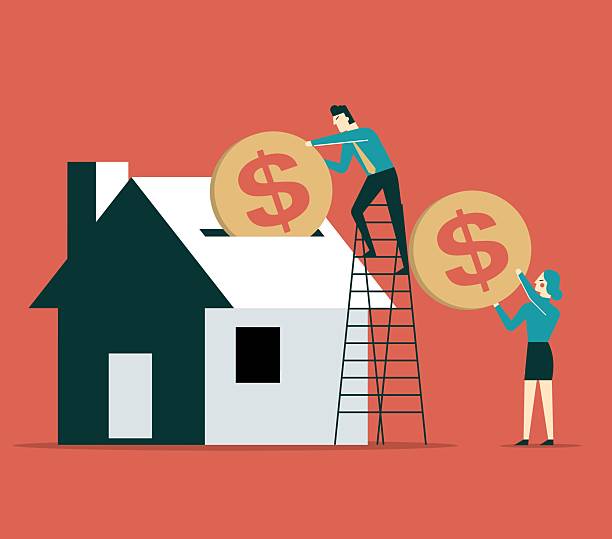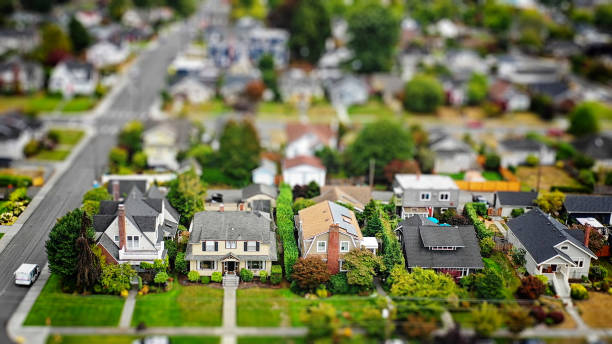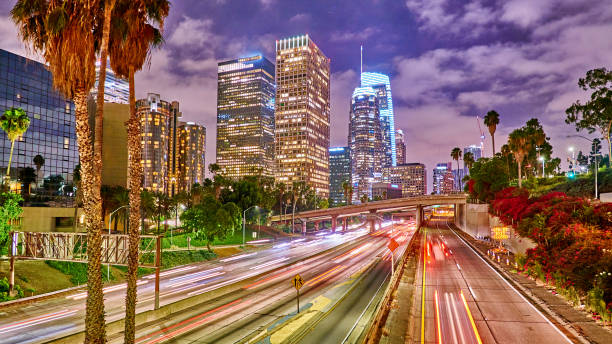Los Angeles Housing Market Forecast 2026: Will Home Prices Finally Dip Next Year?
The City That Refuses to Cool Down — Until Now
For years, Los Angeles has defied the gravity of the national housing market. When other metros slowed, LA homes just… didn’t. Buyers lined up, sellers called the shots, and every square foot of real estate seemed coated in gold.
Table of Contents
ToggleBut now, the latest housing data is whispering something new — not a crash, but a cool breeze after a decade-long heatwave. Zillow’s forecast shows a modest decline, with prices expected to dip about 1.3% between mid-2025 and mid-2026. It’s small, almost unnoticeable to the naked eye, but in a market as inflated as LA’s, even a one-percent drop tells a bigger story.
Los Angeles Housing Market Forecast 2026
Projected percentage change in home values:
What the Numbers Are Saying
Let’s start with the data shaping this discussion:
Zillow’s 2025–2026 Projections
- July 2025: -0.4%
- September 2025: -0.9%
- June 2025 to June 2026: -1.3%
This isn’t doom and gloom. It’s a “reset.” A pause in the breakneck growth LA has been running on since the pandemic.
Mashvisor’s September 2025 Snapshot:
- Median Property Price: $1,732,149
- Price-to-Rent Ratio: 31
- Average Monthly Rent: $4,714
- Average Cap Rate: 2%
That 2% cap rate is telling. It means investors are barely squeezing profit out of rental income, especially after taxes and maintenance. When you add rising insurance costs, tighter credit, and stagnant wage growth, the logic of buying at LA prices starts to wobble.
Check it out here: Reddit post
“Not a Crash, Just a Chill”
Let’s be clear: this isn’t 2008. The fundamentals of Los Angeles real estate are still strong — limited land, high construction costs, and steady population inflow. But what we’re seeing is buyer exhaustion meeting seller hesitation.
Homes are staying on the market longer. Price cuts are popping up across neighborhoods like West LA, West Hollywood, and parts of the San Gabriel Valley. A $50,000 price reduction might sound dramatic, but on a $1.5 million listing, it’s a drop in the bucket.
It’s not that buyers disappeared — they’re just pickier.
The Emotional Market
Los Angeles real estate isn’t just about math. It’s about psychology.
After two years of climbing mortgage rates and economic uncertainty, buyer confidence is fragile. Even though national markets are hinting at recovery, LA’s luxury-heavy market plays by its own rules.
Many homeowners would rather rent out their property than sell at a perceived loss. That’s exactly what’s happening in townhome complexes around Pasadena and Arcadia — listings are being pulled and turned into rentals almost overnight.
This behavior locks inventory out of circulation, keeping supply artificially tight. The result? Prices don’t fall fast — they just hang there, awkwardly high, while the market waits for someone to blink first.

The Interest Rate Confusion
There’s another tug-of-war happening: the Fed’s moves versus mortgage realities.
Some believe that upcoming rate cuts will lower mortgage rates. Others argue it won’t matter — and they’re partly right. Mortgage rates often follow the 10-year Treasury yield, not the Fed’s overnight rate directly.
As one market observer put it:
“Prices aren’t going up with rate cuts because rate cuts don’t affect mortgage rates. Mortgage rates are based on the 10-year T-bill.”
So, even if the Fed cuts rates again, mortgage relief might be limited. LA buyers waiting for cheaper financing may have to wait longer than they think.
Local Observations: Price Cuts, Pullbacks, and Patience
If you drive through neighborhoods from Silver Lake to Santa Monica, you’ll spot a quiet pattern — price tags with slashes through them.
Real estate agents are reporting:
- More frequent $20K–$100K price reductions
- Listings staying active for 60–90 days instead of 30
- More homes being delisted and relisted at slightly lower prices
It’s not panic selling. It’s recalibration.
Owners who bought in 2021–2022 at peak values are hesitant to cut too deep. Those who need to sell — because of a job relocation, divorce, or financial strain — are the ones leading the price corrections. Everyone else? They’re holding.
Which Areas Are Feeling It Most?
Not every neighborhood reacts the same way.
Holding Strong:
- West LA & Santa Monica: Premium coastal markets still attract stable demand from wealthier buyers.
- Culver City & Studio City: Family-friendly with tight inventory; values may dip slightly but remain resilient.
Softening Noticeably:
- Downtown LA: Condos have been struggling since remote work reshaped demand.
- Eastside & Koreatown: Moderate declines as affordability issues push buyers further out.
- San Fernando Valley: More listings, longer days on market, and cautious investors.
In short, location still rules, but even the kings are trimming their crowns.
Los Angeles Housing Market Stats 2026
The Investment Angle: Is 2026 a Buying Year?
If you’re an investor, 2026 might be an entry window — but only if you play it smart.
Here’s how the math shakes out:
- Cap rates around 2% aren’t exciting unless you expect appreciation.
- Rent growth has slowed to a crawl.
- Carrying costs — insurance, repairs, HOA dues — keep climbing.
Still, Los Angeles is Los Angeles. It remains one of the world’s most desirable real estate markets. Investors with a long-term view (and deep pockets) might see 2026 as a quiet moment to buy before the next wave.
Smart investors will:
- Target undervalued multifamily properties in stable school districts.
- Focus on value-add renovations that justify higher rents.
- Avoid luxury flips unless they have exceptional design or location appeal.
The Buyers’ Dilemma
For everyday buyers, the story is more emotional than financial.
Imagine sitting on the sidelines for two years, waiting for the “crash” that never came. Now prices are dipping slightly — but mortgage rates are still high, and competition hasn’t disappeared.
So what do you do?
If you’re buying to live in the home long-term, a small dip shouldn’t scare or excite you too much. Focus on affordability and lifestyle, not short-term price swings.
If you’re buying as an investment, timing matters more. The slim profit margins mean you need to buy strategically — not just anywhere that looks “cheap.”
My Take: The Market Needs a Breather
Let’s call it what it is — a pause.
Los Angeles real estate has been sprinting uphill for years. The city was due for a slowdown, and that’s exactly what’s happening. The 1–2% price dip projected for 2026 isn’t dramatic. It’s healthy. It’s balance creeping back in.
What’s more, this cooling period could finally give first-time buyers a fighting chance. For years, LA has priced out an entire generation. If prices flatten, and if mortgage rates nudge lower, a few doors might finally open.
That’s the optimistic view.
The pessimistic one? That this “pause” turns into stagnation — with homeowners refusing to sell, investors sitting out, and buyers waiting endlessly for affordability that never arrives.
What Could Change the Forecast?
Several variables could flip the script entirely:
- Interest Rate Cuts: Could reignite demand if they meaningfully lower mortgage rates.
- Job Growth: Strong employment in entertainment, tech, or logistics could stabilize housing.
- Construction Costs: If material and labor costs ease, developers might add new supply.
- Policy Moves: Local zoning reforms or tax incentives could reshape affordability.
On the flip side, a weak national economy or continued inflation could deepen buyer hesitation and stretch this cooling period well into 2027.
Looking Ahead: What 2026 Might Really Feel Like
If you’re expecting fireworks — don’t.
If you’re expecting relief — maybe a little.
Here’s the likely rhythm of 2026:
- Listings rise slightly in spring.
- Prices dip 1–2% by summer.
- Buyers return cautiously by fall.
- Investors start scouting again when the dust settles.
The market won’t crash. It’ll just take a breath, stretch its legs, and decide what kind of city it wants to be next.
Because Los Angeles, as always, is not a data point. It’s a mood.
And right now, that mood is changing — slowly, thoughtfully, and just enough to make the next year worth watching.
Bottom Line:
Los Angeles isn’t collapsing. It’s cooling — and that’s the healthiest thing that could happen.
If you’re a buyer, 2026 might finally hand you a bit of leverage.
If you’re a seller, don’t panic — but do price smart.
And if you’re an investor? Get ready. The best opportunities in LA often appear when everyone else is waiting for someone else to move first.
Schedule your free consultation with our consultants to learn more about the real estate trends.






